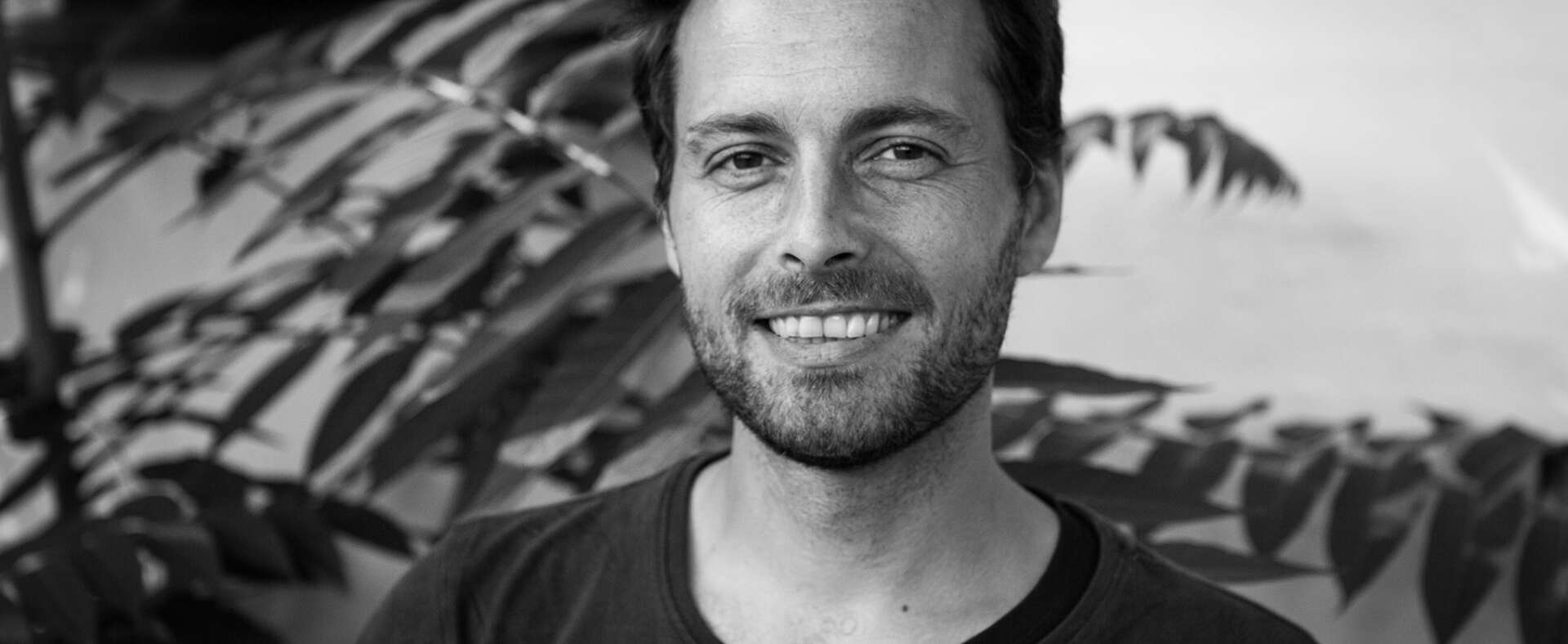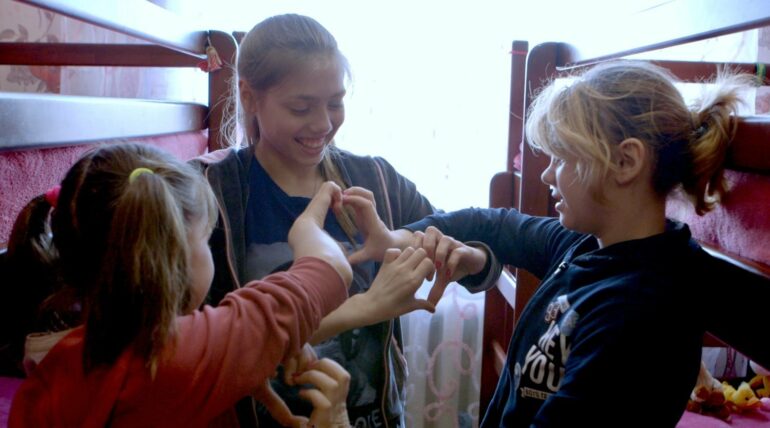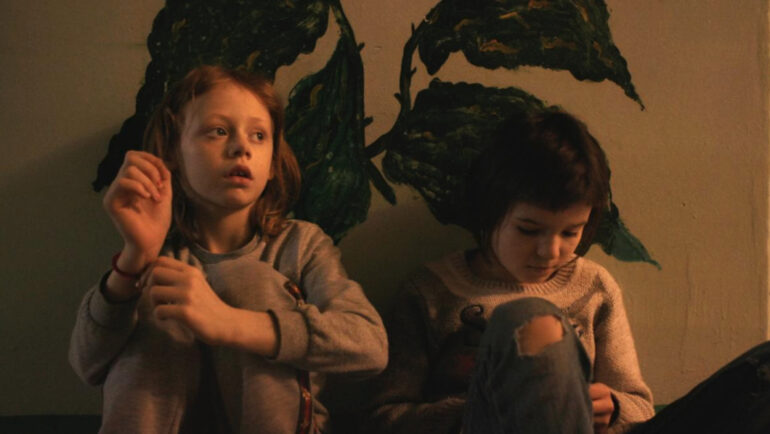
The Danish film produced by Final Cut for Real is world premiering on Sunday at the online Sundance Film Festival’s World Cinema Documentary Competition programme.
A House Made of Splinters is the director’s second film after his award-winning The Distant Barking of Dogs (Best First Appearance at IDFA 2017), focusing on the lives of children in war-torn Eastern Ukraine.
Set in an orphanage, the film follows the fate of four children as they await state authorities and courts’ decision on their future, while a dedicated group of social workers in the orphanage deploy all their energy and warmth to create an almost magical safe space for them.
The film was produced by Monica Hellström of high-profile production house Final Cut for Real, which successfully entered both Jonas Poher Rasmussen’s Flee and Camilla Nielsson’s President at last year’s Sundance Film Festival competition programme.
A House Made of Splinters is co-produced with Story Sweden, Donkey Hotel in Finland, Moon Man in Ukraine, with co-financing from MDR, ARTE, BBC, support from DR, SVT, YLE, VRT, VPRO, TV3, RÚV, the Danish Film Institute, Swedish Film Institute, Finnish Film Foundation AVEK, Creative Europe Media Programme, Nordisk Film & TV Fond among others. Cinephil handles world sales.
How does it feel to launch your film at Sundance where Flee had its own world premiere a year ago?
Simon Lereng Wilmont: Being selected for Sundance is a dream come true. I’m super happy!
All your films focus on pre-teens and teens. Where does this attraction come from?
SLW: I’m drawn to that as it’s a tumultuous time in life, where everything keeps changing. You are faced with many big life lessons that force you to develop, to try to cope with the world. Many of the greatest universal stories stem from that time, between childhood and adulthood.
Was it while shooting The Distant Barking of Dogs that the idea for this film came about?
SLW: Yes - while filming The Distant Barking of Dogs, I started worrying for the young boy Oleg [the central character] and his fate, if something would happen to his sole carer, his grand-mother Alexandra. He would be all alone in the world. What would happen to him? I felt I needed to go and figure it out for myself. With my Ukrainian assistant director, I started researching and found this shelter. This is the short version!
How difficult was it to find the Priyut temporary orphanage in Eastern Ukraine, where children can stay for up to nine months. It seems quite extraordinary in terms of leadership (run apparently only by women), and a warm and secure space for neglected kids?
SLW: Actually, we went to a handful of state orphanages and shelters before we found this exact shelter, and these are usually run by women. But what was unique with this particular shelter was the warmth that came out of it, despite its worn-out structure. There were kids drawings everywhere, they were constantly hugging the social workers, and they were singing together. There was an extraordinary atmosphere. I felt compelled to spend time in that unique place.
The voice-over is from one of the managers of the orphanage. How did you convince her to do it?
SLW: I chose Margherita, the administrator of the shelter, notably because she is one of the warmest persons I’ve met in Ukraine so far. She has a sweet soul, and her human warmth illuminates this place and spreads among the other social workers. It made sense to have her guide us and explain some practicalities about the shelter, so that I could just focus on the kids and their stories.
The kids depicted have alcoholic parents, mothers unable to care for them. Can you give us a brief overview of the impact of war on use of substance in Eastern Ukraine? It is quite chilling when one of the social workers says in the film that some girls from the shelter, later on in life, turn into alcoholics themselves, and are forced to leave their own kids in the shelter, in a fatal vicious circle...
SLW: As far as I know, there has always been these type of social problems in the Donbas region, even before the war broke out. Then with the war, a lot of jobs disappeared which in turn increased the problems of substance abuse, depression, neglect, and reinforced the social problems inherited, from parent to child. It’s super difficult to escape this vicious circle.
How many trips did you do, for how long each time, and who did you work with?
SLW: I think I did 10 trips and I stayed around one week every time. It was just me and my assistant director Azad Safarov, who also worked with me on The Distant Barking of Dogs, and our local production coordinator Lena Rozvadovska.
Was language an extra challenge for you?
SLW: I’ve been studying Russian at night school while we were shooting The Distant Barking of Dogs. It’s been a few years now, so I’m not so much in the dark anymore. But I would also tell my assistant director about the framework of each scene that I wanted to capture, based on what I knew about the people involved. I would prepare things in such a way that everyone knew what was going on when I was filming, and they could start treating me almost like an object, something invisible. But actually sometimes it’s an advantage not to speak the language, as you then look at the eyes, movements, body language and mimic which tell us so much more than words.
That’s the beauty of cinema vérité…
SLW: Yes when that works, it’s magical. The key part of my working technique is to spend a good amount of time with the characters that I’m filming. When you get used to people’s company, you do fun, normal stuff together. Then when something powerful happens to the characters, they forget about my presence because they are just involved in what happens. They are used to me and trust me. This is key.
How many different children did you follow before settling on the three kids Eva, Sasha, and Kolya, and what different narratives where you looking for to weave together the story?
SLW: Usually, I choose characters because I like them and could see they had great screen presence. I filmed several kids, mostly at the beginning, to understand the place. But then, as I got a better understanding of the place, I started focusing on specific people. With Eva, Sasha, and Kolya they really stood out and it was obvious for me to follow them. Each of the kids ended up representing the three ways the children could leave the shelter either by going back to their family, they would get adopted or end up at a state orphanage.
You have also given much space to playtime. And of course, as these are kids, their games reflect the trauma that they have encountered in their young lives….
SLW: It’s very interesting that you’re mentioning this. At the beginning, I thought it was important for me to be also in the real world. I spent a lot of time with the social workers to visit the families where kids had been taken away. But then, in the editing room, we felt that listening to the kids and their stories, watching their games was actually saying more about their lives and reality than filming in the outside world. Listening to the kids and discovering what had happened through their own voices, introduced personal dimensions with a bit of hope. That made things so much more powerful.
These are heart-breaking stories, but there is never an over-emphasis on tragedy or despair. By introducing poetry, and balancing playful, emotional moments, with practicalities in the orphanage, you definitely give a lot of hope…
SLW: The reason why I was drawn to this place is because there is hope. Kids keep on hoping there, and hope is key for their survival. I wanted to take care of that hope and do my best to support it.
Hope is the future, not only for those kids but for the entire region, and it is the key to break the evil social spiral.
With such vulnerable children as protagonists, there were moral responsibilities at stake. Did you have psychological-even legal experts working with you?
SLW: Yes, we had professionals working with us from the beginning on the project. Naturally the kids came to mean a great deal to me, and it was important for me to know, that they were okay. It’s a huge responsibility working with children, both during, but especially also after filming ends. We worked closely and are still in touch with the staff at the shelter, the psychologists, and the local Children’s Services. We’re also in close contact with our local production coordinator, who now runs the Ukrainian NGO Voices of Children, an organisation that focuses solely on taking care of vulnerable children living near the frontline. Through them, the kids are now part of a programme that has two child psychologists attached, and they’re working with the kids on a regular basis.
Hopefully the film’s global exposure will also contribute to raising awareness on Priyut and the remarkable work of the social workers…
SLW: I hope so. They really need support because their work is so important for the kids living there.
The only boy Kolya - in a way - could have been your only protagonist, with such a charismatic, complex personality (both rebel and carer of his younger siblings) and his heart-breaking story. Weren’t you tempted to continue to film him over time, the way Richard Linklater did in Boyhood?
SLW: This is exactly what I’ve been thinking about! I have actually already been back once to film him again. But it’s super difficult on a practical standpoint, to lift a project over several years. For now, it’s a hobby project. It brings me joy because it means I get a good excuse to meet Kolya and the other kids regularly over time. My hope is to be able to make such a project fly.
It must be very hard to leave behind the kids and go back to the safety of your home after the filming...
SLW: That is probably one of the hardest things about doing these films. I get so close to the characters and naturally I worry about them. This film has no doubt had a huge influence on my relationship with my own kids. How much time I spend with them, how present I am when I’m with them. Especially after a filming trip, I would hug them so much. They probably thought I was a little crazy, but I really needed that.
This is your fifth film with Final Cut for Real and fourth collaboration with producer Monica Hellström. What essential qualities does she have?
SLW: I love Monica! Signe [Byrge Sørensen, Final Cut for Real CEO] paired me with Monica nearly 11 years ago, when she was starting as a producer at Final Cut for Real. We have grown together in many ways and this has created a special bond between us. I trust her totally. That long term relationship is gold!

